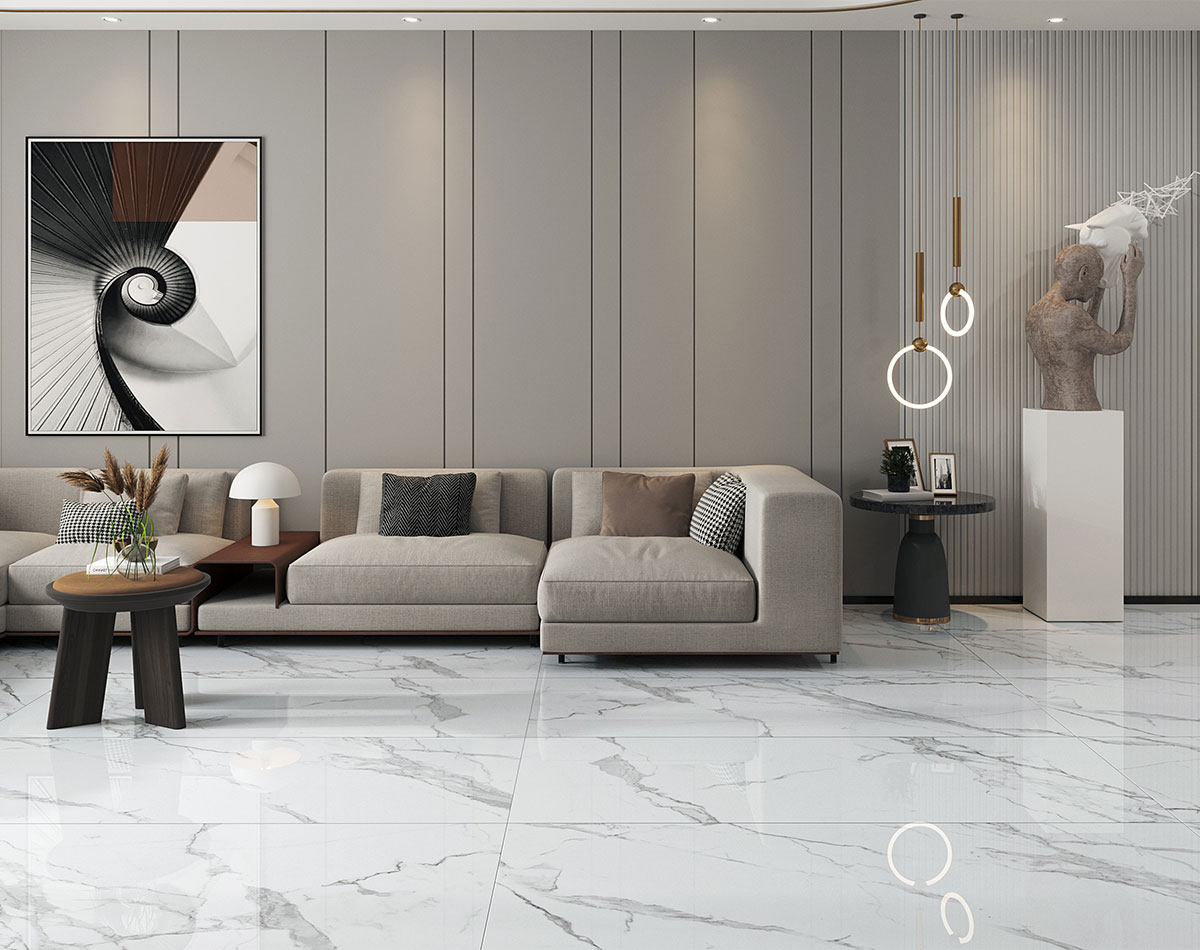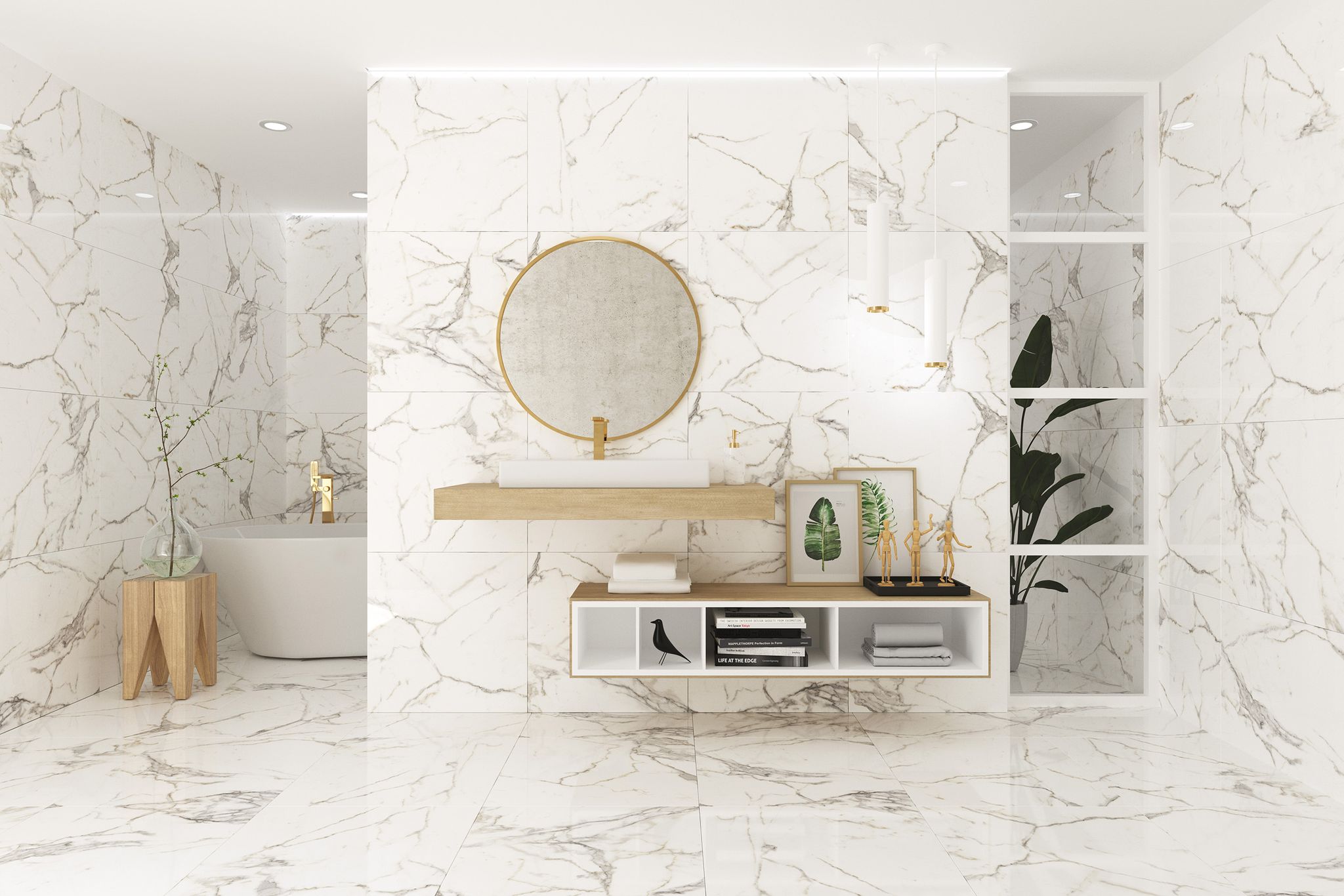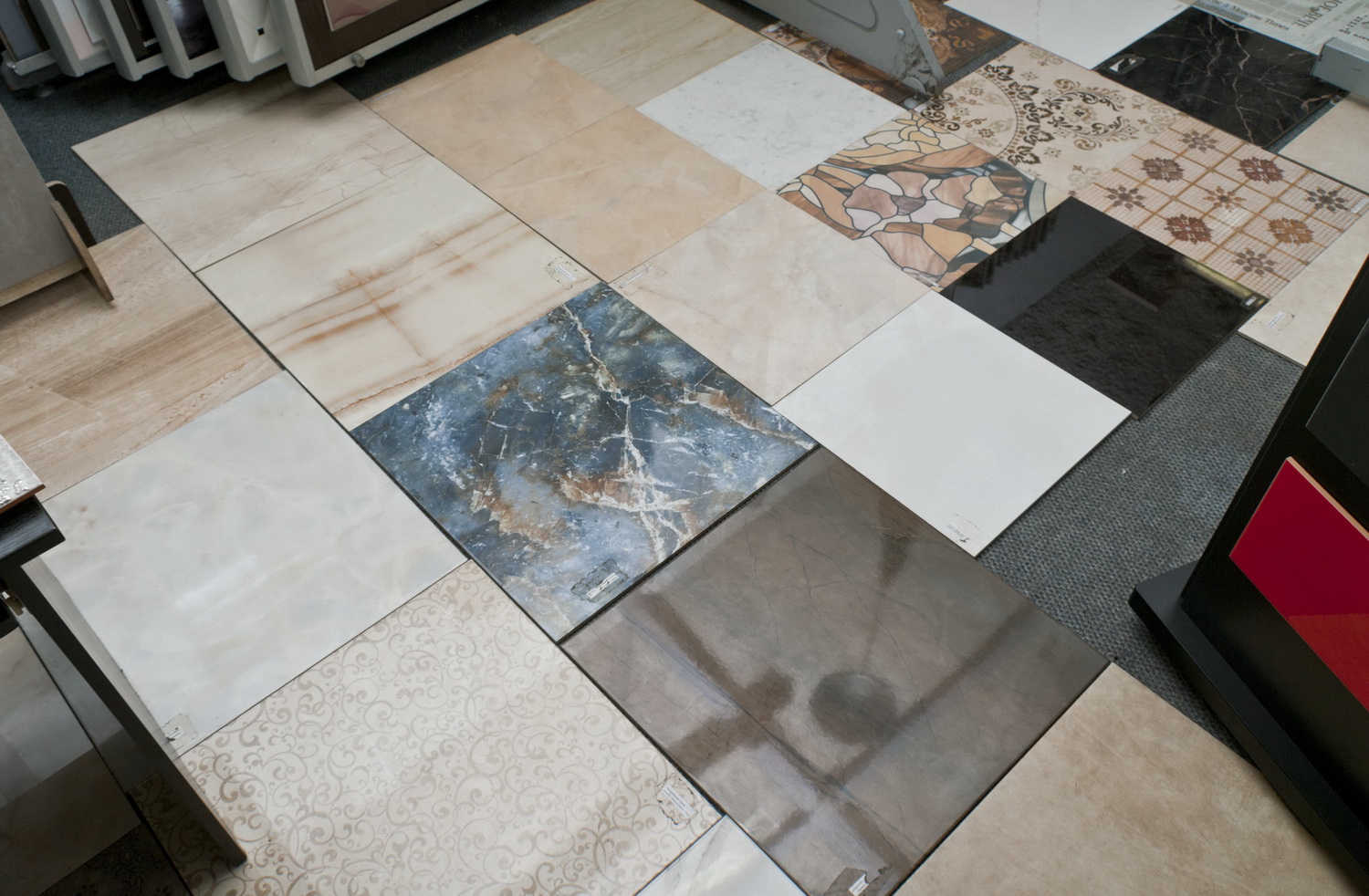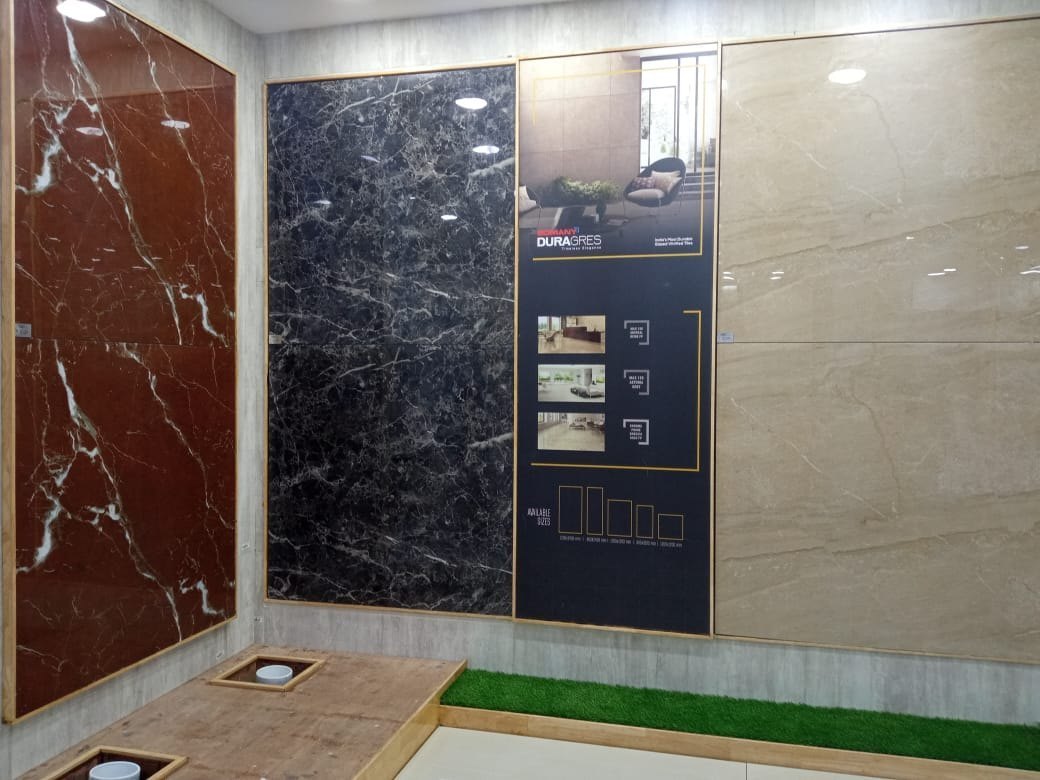Conquering the New Russian Tile Frontier: A Strategic Partnership with CPG Vanguard of Quality and Innovation
The Dynamic Landscape of the Russian Tile Market
The Russian ceramic and porcelain tile market is currently undergoing a period of profound and rapid transformation, presenting an exceptional and timely collaboration opportunity for domestic tile retailers, distributors, real estate developers, builders, and architects. As Russia’s economy stabilizes, driven by renewed infrastructure investment and a flourishing premium residential sector, the demand for high-quality, aesthetically sophisticated, and technologically advanced tiling solutions has never been higher. This market evolution necessitates a strategic shift away from basic, commodity-grade materials toward premium, durable, and stylish tiles that meet stringent international and domestic standards.
To successfully navigate and capitalize on this burgeoning demand, Russian businesses require a supply partner that offers more than just competitive pricing. They need a globally recognized manufacturer with a proven track record of innovation, consistent quality, and logistical reliability.
CPG’s comprehensive product portfolio—featuring an extensive range of sizes, finishes, and designs, including specialized frost-resistant porcelain and large-format slabs—is perfectly suited to meet the specific aesthetic and performance requirements of the diverse Russian climate and architectural landscape.
This detailed exposition serves as a strategic roadmap, outlining the compelling reasons why now is the ideal moment for Russian enterprises to forge an exclusive, long-term partnership with CPG to jointly capture market share in this lucrative and expanding sector.

Part I: Analyzing the Russian Market Imperative
The Current State of Russia’s Construction Boom
Russia’s construction and interior design sectors are the primary engines fueling the tile market’s growth. Several macroeconomic factors underscore the urgent need for reliable, high-quality tile imports:
1. Macroeconomic Stability and Growth Drivers
The Russian ceramic tile market is projected for steady, sustained growth, with market analyses consistently forecasting a compound annual growth rate (CAGR) exceeding 3.00% through 2033. The market size, already substantial at an estimated $2.82 billion in 2025, is primarily driven by:
- Residential Development: A significant increase in disposable income among the urban middle and upper classes, particularly in major cities like Moscow, St. Petersburg, Kazan, and Novosibirsk, has spurred investment in new, high-specification apartment complexes and private luxury homes. These projects prioritize European-grade finishes and durable materials, making premium porcelain a necessity, not a luxury.
- Commercial and Retail Infrastructure: The sustained development of modern business centers, hotels, shopping malls, and public transportation hubs demands heavy-duty, high-performance tiles capable of withstanding extreme traffic and climatic variations. Tiles used in these environments must combine aesthetic appeal with maximum wear resistance.
- Government-led Infrastructure Projects: Continued state investment in national and municipal infrastructure, coupled with comprehensive urban renewal programs, requires massive volumes of tiles for public buildings, hospitals, and educational facilities, often adhering to strict quality and safety protocols.
2. The Critical Shift in Consumer Preferences and Architectural Trends
The Russian buyer—be it an architect specifying a material, a developer selecting finishes, or a retail consumer—is demonstrably moving up the value chain. Simple, small-format ceramic tiles are being rapidly supplanted by high-end alternatives.
- The Dominance of Porcelain: Porcelain tiles are now the de facto standard for both flooring and high-end wall cladding. Their superior density, near-zero water absorption rate, and exceptional durability make them uniquely suited to the freeze-thaw cycles and temperature extremes common across Russia.
- The Rise of Large-Format Slabs: The aesthetic trend favors minimal grout lines and seamless surfaces to create a sense of scale and luxury. This drives the overwhelming preference for large-format tiles and mega-slabs—formats like 600×1200 mm, 800×1600 mm, and 1200×2400 mm. These large surfaces are often utilized to mimic expensive natural stone like Calacatta or Carrara marble, offering the visual grandeur without the maintenance challenges and price volatility of the natural material.
- Design-Forward Aesthetics: Russian design is sophisticated, blending a respect for traditional elegance with sleek, modern minimalism. Demand is concentrated on tile collections that accurately replicate natural wood textures, offer deep, saturated stone looks, or feature complex geometric and metallic designs often associated with European luxury brands.
3. The Geopolitical and Sourcing Void
Post-2022, global trade dynamics have significantly reshaped the supply routes to Russia. Traditionally dominant European suppliers, while still present, have faced increasing logistical hurdles and market complexities. This has created a substantial strategic vacuum in the imported tile segment, an opportunity that Asian manufacturing giants are perfectly positioned to seize.
Russian buyers are actively seeking new, reliable international partners who can:
a) Ensure consistent product quality uncompromised by geopolitical factors.
b) Guarantee stable supply and predictable logistics.
c) Offer world-class design innovation at a competitive cost.
CPG, emerges as the definitive solution, offering an optimal blend of quality assurance, production scale, and competitive pricing, all essential for successful, high-volume trade with the Russian Federation.

Part II: The Historical and Cultural Significance of Tiles in Russian Architecture
To truly penetrate the Russian market, one must appreciate the deep cultural roots of tiling. The journey of the tile in Russia is a microcosm of the nation’s architectural and design evolution, from early religious art to contemporary luxury.
From Kievan Rus’ to the Golden Age of Izrazets (10th–17th Centuries)
The earliest known application of ceramic tiles in the region dates back to the 10th and 11th centuries in Kievan Rus’. Early techniques were heavily influenced by Byzantine and Crimean craftsmanship, primarily featuring geometric and simple motifs in Orthodox churches.
The defining moment came in the late 15th century with the widespread adoption of the Izrazets—a highly decorative, glazed terracotta tile. These were characterized by:
- Vibrant Color Palettes: Rich blues, greens, yellows, and reds, often used to contrast against the austere stone walls of interiors.
- Intricate Relief Patterns: The tiles were cast in molds, allowing for complex, three-dimensional designs depicting everything from flora and fauna to religious iconography and heraldic symbols.
- Functional Art: Izrazets were essential decorative elements, particularly for cladding the traditional Russian Pechka (stove/fireplace), serving as a focal point and heat reservoir in harsh winters.
The 17th century is recognized as the golden age of Russian tile art, with Moscow Glazed Tiles adorning grand palaces, monasteries, and public buildings. This tradition solidified the tile’s status not merely as a functional flooring material but as an indispensable element of artistic and cultural expression.
The Imperial Era and Industrialization (18th–19th Centuries)
With the shift of the capital to St. Petersburg and the influence of Peter the Great, Russian architecture embraced the grandeur of European Baroque and Neoclassicism. Tile usage evolved, favoring:
- Geometric and Checkerboard Floors: Inspired by Italian and French palaces, simple yet elegant patterns emerged in reception halls and ballrooms.
- Shift to Industrial Production: Tile manufacturing began to transition from small workshops to industrial factories, enabling the production of more standardized, durable, and affordable products for the rapidly expanding urban population. This industrial foundation paved the way for the adoption of modern porcelain.
The Contemporary Russian Aesthetic
Today’s Russian design world seeks to marry historical grandeur with technological excellence. Leading Russian architects are keenly interested in materials that can withstand the rigors of the climate while delivering a sophisticated aesthetic. CPG’s product line perfectly bridges this gap:
- The Large Format Porcelain Slabs offer the seamless, opulent look reminiscent of imperial palace floors and walls, but with vastly superior performance and ease of installation.
- Frost-resistant exterior tiles ensure that modern facades and open terraces maintain their aesthetic integrity through the long, harsh Russian winter, a direct evolutionary link from the durable, climate-specific Izrazets.
This appreciation for both artistic heritage and modern functionality makes the Russian market highly receptive to the high-definition, technologically advanced tiles offered by CPG.
Part III: CPG – The Ideal Strategic Partner from iran’s Manufacturing Hub
CPG’s position as a premier supplier for the Russian market is rooted in the strengths of the iranian ceramic industry and its own operational excellence.
iran Global Dominance in Ceramics
iran has consolidated its status as a global ceramic powerhouse, primarily concentrated in the Morbi cluster in Gujarat. Key metrics illustrating this strength include:
• Technological Adoption: The industry has aggressively invested in state-of-the-art Italian and Spanish machinery, including high-capacity presses, digital glazing lines, and continuous kilns, ensuring CPG’s production quality rivals the world’s best.
• Production Volume and Agility: The sheer volume capacity allows CPG to fulfill large project orders for Russian developers without compromising delivery timelines, a critical factor given Russia’s reliance on large-scale imports
CPG’s Core Strengths: A Recipe for Russian Success
CPG differentiates itself through an integrated system designed specifically for international market demands, particularly those with unique logistical and environmental requirements like Russia.
1. Integrated Design, Production, and Quality Control
CPG operates a fully in-house system—from concept design and mould creation to manufacturing and quality inspection. This end-to-end control ensures:
- Consistency: Products meet exact specifications batch after batch, which is vital for large Russian projects where material consistency is non-negotiable.
- Rapid Innovation: CPG can quickly translate global design trends—such as new marble patterns or textured finishes—into marketable collections, keeping Russian partners ahead of local competitors.
- Tailored Collections for Russia: The CPG portfolio includes specific product lines optimized for Russian conditions:
- High-Density Porcelain: Engineered for minimal water absorption (), guaranteeing frost resistance for external facades and balconies.
- Thicker Tiles (9mm to 18mm): Available for high-load environments, public spaces, and industrial flooring.
2. The Direct Factory-to-Partner Advantage
CPG employs a strict Direct Factory-to-Partner (DFP) business model, which is a powerful advantage for Russian distributors and retailers:
| DFP Model Advantage | Benefit for Russian Partner | Impact on Business |
| Elimination of Middlemen | Lower per-unit acquisition cost. | Significantly higher profit margins on all sales. |
| Transparent Pricing | Direct engagement on costs and terms. | Predictable budgeting and increased market competitiveness. |
| Priority Allocation | Direct access to factory production slots. | Guaranteed, timely delivery for critical projects and reduced inventory risk. |
| Customization Access | Direct line to design and technical teams. | Ability to order slightly customized colors or finishes for exclusive projects. |
This model is not merely about cost savings; it is about establishing a foundational competitive edge for CPG’s Russian partners in a price-sensitive yet quality-demanding market.
Part IV: The CPG Product Ecosystem: Solutions for Every Russian Project
CPG’s product mastery extends across the entire spectrum of tiling needs, providing Russian architects and designers with unparalleled flexibility. The collection is segmented by size, finish, design technology, and application suitability.
1. Comprehensive Range of Tile Sizes
The market’s shift to larger formats is fully addressed by CPG’s state-of-the-art production lines.
| Product Category | Key Size Ranges (mm) | Target Application in Russia |
| Large Format Porcelain Slabs | 1600×3200, 1200×2400, 1200×1800 | Luxury residential walls, commercial lobbies, continuous facade cladding. |
| Porcelain Floor Tiles (Standard) | 600×600, 800×800, 600×1200 | Residential flooring, apartments, offices. |
| Full Body Tiles (Heavy Duty) | 600×600, 800×2400, 1200×3000 | High-traffic public areas (airports, stations), industrial zones, shopping centers. |
| Ceramic Wall Tiles | 300×450, 300×600, 200×600 | Kitchen and bathroom interior walls, residential applications. |
| Quartz Countertops/Slabs | Up to 2000×3000 | Kitchen and bathroom vanity tops, bars, reception desks (premium segment). |
2. Versatility in Finishes and Textures
The finish dictates the atmosphere and performance of the tile. CPG offers specialized finishes to meet diverse functional and aesthetic demands:
- Glossy and High Glossy: Provides maximum light reflectivity, enhancing the perceived size and opulence of an interior space—a popular choice for luxury residential projects in Moscow.
- Matt and Satin: Offers a subtle, low-glare elegance, highly favored in modern, Scandinavian-influenced Russian design, particularly in living areas and bedrooms.
- Rustic and Carving (Structured Surfaces): These tactile finishes replicate the deep texture of slate, natural wood grains, or intricate stone carvings, ideal for creating a natural, anti-slip surface in exterior areas or a rustic charm indoors.
- Polished and Nano-Sealed: Advanced polishing combined with a Nano-sealing treatment makes the tile surface highly resistant to staining and scratches, significantly easing maintenance in high-traffic commercial environments.
3. Advanced Design Technologies
CPG utilizes High-Definition Digital Printing (HD) and Digital Glaze Technology to achieve stunning realism in its design collections:
- Engineered Surfaces: Near-perfect mimicry of expensive natural materials like rare marble (e.g., Panda White, Statuario), various wood species (oak, walnut), and natural stone (quartzite, granite). This allows for superior, more consistent, and cost-effective alternatives to natural stone.
- Full Body Technology: For heavy-duty use, CPG’s full-body tiles feature a uniform color and pattern throughout the tile thickness. This means that even if the surface is severely scratched or chipped, the damage is virtually invisible, ensuring unmatched longevity.
- Climatic-Specific Designs: CPG’s design team incorporates colors and patterns that align with the European aesthetic preferences common in Russian architectural planning, focusing on muted tones, strong geometric lines, and timeless patterns.
4. Thickness Options for Every Load-Bearing Need
CPG’s production spans a full range of thicknesses, ensuring structural integrity and application-specific performance:
- Slim 6mm Tiles: Ideal for wall cladding and renovating existing surfaces, minimizing weight and structural load.
- Standard 9mm to 12mm Tiles: Suitable for most residential and standard commercial flooring.
- Robust 16mm to 18mm Tiles: Specifically designed for heavy commercial and industrial use, outdoor public areas, and environments requiring exceptional load-bearing capacity and impact resistance.

Part V: Sustainability and the Green Building Movement in Russia
The global push for sustainability is reaching Russia, where green building standards are gaining traction, driven by both state-level initiatives and a desire for healthier, energy-efficient living spaces. CPG is a leader in eco-friendly manufacturing, aligning perfectly with this emerging Russian trend.
CPG’s Eco-Friendly Production Commitment
CPG’s manufacturing processes are built on a foundation of minimizing environmental impact and maximizing resource efficiency:
- Renewable Energy Integration: A significant portion of CPG’s facilities operates on solar power, dramatically reducing reliance on fossil fuels and cutting the overall corporate carbon footprint.
- Cleaner Fuels for Firing: A major transition from coal gas to cleaner energy sources like natural gas and biogas in kiln operations has drastically reduced the emission of harmful pollutants and .
- Zero-Waste Manufacturing (Circular Economy): CPG employs a closed-loop system where all broken, defective, or waste tiles are recycled back into the raw material feed, conserving primary resources and eliminating landfill waste.
- Sustainable Packaging: Packaging is meticulously designed using recycled and biodegradable materials where possible, minimizing plastic usage and environmental harm during the long transit route to Russia.
The Synergy with Russian Green Standards
CPG’s commitment to sustainability offers Russian partners a distinct competitive advantage in the rapidly developing green construction market:
- Durability and Lifecycle Cost: CPG’s high-quality, durable tiles, engineered for harsh climates, require less frequent replacement. This extended product lifecycle significantly lowers the long-term environmental and financial costs of a project.
- Healthier Indoor Environments: The density and specialized finishes of CPG’s porcelain tiles, particularly those with anti-germ and stain-resistant properties, prevent the proliferation of mould and bacteria, supporting the development of healthier indoor environments—a critical consideration for residential buildings and hospitals in Russia.
- Certification Readiness: CPG’s sustainable practices make its products easily compliant with international and emerging Russian Green Building Standards, allowing architects to secure points for environmental accreditation on major projects.
By choosing CPG, Russian partners are not only procuring premium materials but are also investing in a greener, more responsible future for the Russian construction sector.
Part VI: Logistics and Partnership Framework: Simplified Trade with CPG
A successful partnership relies not only on product quality but also on flawless execution of logistics and dedicated partner support. CPG has streamlined its processes to ensure seamless trade from India to the Russian Federation.
1.Mastering the iran-to-Russia Logistics Corridor
Navigating the complexities of international shipping and customs is a hallmark of CPG’s service:
• Reliable Carrier Networks: CPG maintains strong relationships with leading global and regional container shipping carriers, ensuring optimal vessel space and predictable transit times to key Russian ports like Novorossiysk (Black Sea) and routes connecting through the Baltics.
• Simplified Documentation and Customs: Recognizing the complexity of Russian import regulations and language barriers, CPG provides comprehensive support, handling all critical export documentation, customs compliance procedures, and necessary language support to ensure rapid and smooth clearance at the destination port. This reduces delays and administrative headaches for the Russian partner.
2. Exclusive Dealerships and Targeted Support
CPG is committed to a structured, rewarding partnership model built on mutual success.
Exclusive Dealership Opportunities
CPG actively seeks to establish exclusive dealership agreements in strategically important regions and major cities within Russia. This commitment allows the partner to:
- Dominate a Designated Territory: Granting territory-based exclusivity protects the partner’s investment and market development efforts, eliminating direct competition from other CPG distributors in the region.
- Maximize Brand Penetration: Focus sales and marketing efforts on building the CPG brand awareness within the protected zone.
Comprehensive Partnership Support
CPG co-invests in the success of its Russian partners by providing an array of resources:
- Marketing and Sales Assets: Provision of professionally designed, localized catalogues, high-resolution digital assets, sample kits, and technical specifications tailored for the Russian architectural community.
- Showroom Excellence: Assistance with showroom setup, merchandising displays, and visual layouts to effectively present the diverse CPG collections, maximizing customer engagement.
- Dedicated Export Manager: A named, single point of contact responsible for overseeing all aspects of the relationship—from order planning and production scheduling to logistics tracking and after-sales support. This personalized approach ensures rapid issue resolution and proactive communication.
- Project-Based Pricing: Offering flexible, competitive pricing structures for specific large-scale construction or architectural projects, empowering partners to bid competitively against established brands.
3. A Commitment to Long-Term Growth
CPG views its Russian partners not as mere customers, but as co-investors in market development. This philosophy is evidenced by:
- Continuous Product Development: CPG regularly introduces new, trend-setting tile collections, ensuring partners always have the latest, most in-demand products. New launches are often informed by direct feedback and market intelligence gathered from Russian architects and dealers.
- Flexible Inventory Solutions: Working with partners to optimize inventory levels and order frequencies, balancing the need to stock popular items with managing cash flow, especially during Russia’s distinct construction seasons.
Part VII: The Collaboration Process: Your Step-by-Step Guide to Partnership
Initiating a partnership with CPG is a clear, structured, and transparent process designed to build a solid foundation for long-term success.
Phase 1: Initial Engagement and Consultation
- Inquiry: The prospective partner contacts CPG’s dedicated export team via official channels, submitting an introductory profile outlining their business size, market experience, and collaboration goals (e.g., retailer, distributor, project specifier).
- Detailed Consultation: A specialized CPG Export Manager will engage in a thorough discussion to understand the Russian partner’s specific requirements, target market segments, and potential for an exclusive dealership. This phase establishes mutual alignment on quality, volume, and logistics expectations.
- Sample and Quality Evaluation: Upon initial alignment, CPG dispatches comprehensive sample kits and detailed technical data corresponding to the required product categories. This allows the Russian partner to physically evaluate the tile quality, finishes, and suitability for their clientele and local regulatory standards.
Phase 2: Formalizing the Strategic Agreement
- Business Profile Submission & Verification: The Russian entity submits its official business profile and financial credentials for CPG’s due diligence, ensuring a strong and reliable mutual fit.
- Negotiation and Agreement: Both parties finalize the terms of the Partnership Agreement, which clearly outlines key parameters: minimum order quantities (typically starting with one container), payment terms, pricing structures (including project-based pricing), territory exclusivity (if applicable), and CPG’s support commitments.
- First Order Placement: The partner places the initial order. The CPG Export Manager provides hands-on guidance through all operational aspects, including product selection, packaging specifications, and customs documentation preparation.
Phase 3: Onboarding and Sustained Support
- Production and Quality Assurance: CPG manages the entire production cycle, maintaining strict quality checks at every stage, and providing regular updates on order status.
- Logistics Execution: The Export Manager coordinates shipment, tracking, and final document handover
- Onboarding and Launch Support: The partner receives the complete onboarding package, including marketing materials, digital assets, and technical training for their sales staff, preparing them for a successful market launch of the CPG brand.
- Continuous Relationship Management: The partnership transitions into a long-term engagement, marked by regular communication, market feedback loops, and strategic planning sessions with the dedicated CPG manager to ensure sustained market growth and competitive advantage.

Conclusion: Seizing the Moment with CPG
The convergence of a growing Russian construction market, evolving demand for high-end porcelain, and the shifting landscape of global supply chains creates an unprecedented window of opportunity. Russian tile retailers, distributors, developers, and architects who move decisively now to secure a reliable, high-quality partner will be the ones to dominate the next phase of the market’s growth.
CPG offers more than just a product; it offers a strategic competitive advantage:
- Global Quality Assurance: Access to technologically superior, durable, frost-resistant porcelain and ceramic tiles.
- Economic Advantage: The high-margin, cost-effective Direct Factory-to-Partner model.
- Logistical Reliability: Streamlined, expert-managed shipping and customs compliance from India’s key manufacturing hub.
- Design Leadership: A vast, innovative portfolio that meets and anticipates the sophisticated European-influenced aesthetic demands of the Russian consumer.
- Commitment to Sustainability: Alignment with the future of Russian construction through eco-conscious manufacturing.
By establishing an exclusive partnership with CPG, Russian businesses are not just stocking shelves; they are securing a resilient, high-performance supply chain and building lasting value in the Russian tile market—one world-class tile at a time. The time to join hands with CPG and capture this booming market is now.
قیمت های موجود در سایت تاریخ بروزرسانی آن ها ذکر شده و قیمت نهایی محصولات نمی باشند. لطفا جهت ثبت سفارش و استعلام قیمت بروز با کارشناسان ما در ارتباط باشید.
(035-3357)